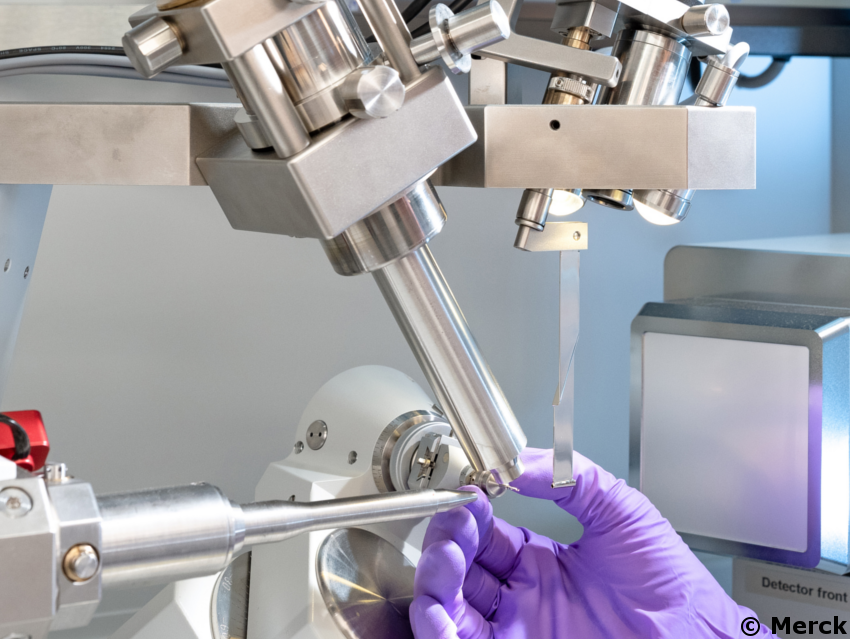In 2013, Makoto Fujita, University of Tokyo, Japan, and the Institute for Molecular Science, Okazaki, Japan, and colleagues have reported the crystalline sponge technology [1,2], a single-crystal X-ray structure analysis method that does not require sample crystallization and works on a sub-microgram scale. It can even provide the crystal structures of liquids. The molecules are absorbed within the pores of crystalline host metal–organic frameworks (MOFs). The molecules within the MOFs’ framework lattice can be analyzed using X-ray diffraction.
However, the method is not easy to handle. There is no universal set of conditions to achieve the best soaking conditions of the host, a high enough concentration of the guest, etc. to get high guest occupancies for various target molecules.
Merck and Rigaku have signed an agreement to develop lab consumables and improve Rigaku’s X-ray systems to accommodate these consumables. The idea is to simplify the complex crystalline sponge technology and to help the technology to become common practice in labs. According to the companies, the crystalline sponge technology is useful in medicine, life science, and the development of advanced materials.
The innovation project is being hosted at the Merck Innovation Center, which aims to grow ideas into viable new businesses beyond the current scope of the company’s activities. Makoto Fujita continues to be involved in the project through the University of Tokyo and the Japan Science and Technology Agency (JST).
- Rigaku Corp., Tokyo, Japan,
- Merck KGaA, Darmstadt, Germany
References
- [1] Yasuhide Inokuma, Shota Yoshioka, Junko Ariyoshi, Tatsuhiko Arai, Yuki Hitora, Kentaro Takada, Shigeki Matsunaga, Kari Rissanen, Makoto Fujita, X-ray analysis on the nanogram to microgram scale using porous complexes, Nature 2013. https://doi.org/10.1038/nature11990
- [2] Yasuhide Inokuma, Shota Yoshioka, Junko Ariyoshi, Tatsuhiko Arai, Yuki Hitora, Kentaro Takada, Shigeki Matsunaga, Kari Rissanen, Makoto Fujita, Corrigendum: X-ray analysis on the nanogram to microgram scale using porous complexes, Nature 2013. https://doi.org/10.1038/nature12527




